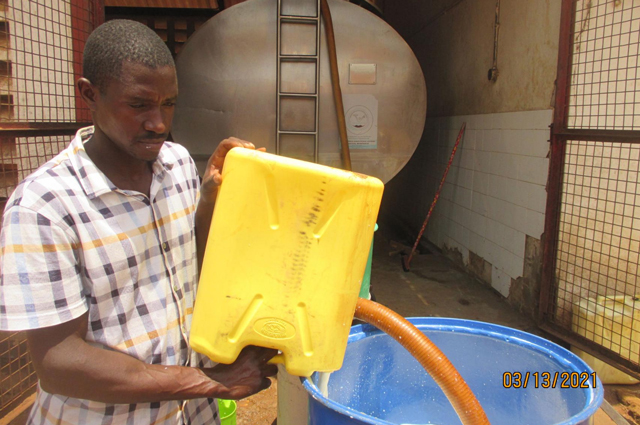
Isingiro, Uganda | THE INDEPENDENT | Drought and the outbreak of foot and mouth disease have led to a sharp rise in the prices of milk.
In the districts of Isingiro, Sembabule, Kazo and Kiruhura, farmers have seen their incomes plummet as they have nowhere to sell the milk. Many are giving back the milk to the calves where possible, as even the local people are avoiding its consumption for fear of contracting the disease.
Unfortunately, it is even more expensive than before to treat animals, as private veterinary officers have increased the cost of drugs and treatment.
Esther Oineababo, a dairy farmer in Kiruhura district says that in the sub-counties which are under quarantine, some people have resorted to smuggling animals and products at night, which she says in increasing the risk of the spread of the FMD.
Allan Aruho, a farmer in Kiruhura Sub-county, Rwomugina Cell says the milk prices have gone a little up, but he decries the middlemen who buy the milk from the farmers and take it to the cooling plants. Aruho says he cannot take the milk or hire someone to take it to the cooling plant or collection centre, because of the new regulations.
According to the regulations, the districts have been divided into cells, and each cell allocated only two milk traders or transporters, to limit the spread of the disease. He says that otherwise, he would be getting more than the 800 Shillings for a litre that they now give him amidst the scarcity.
While in the southwest, they are battling foot and mouth disease, and not-so-harsh weather, in the northern part of the cattle corridor, the drought is becoming almost unbearable, especially for farmers who had improved their stock to hybrids.
In Nakaseke and Nakasongola, the dams have long-dried up and those who are in the hardest-hit areas have resorted to migrate to areas that are slightly not as dry, or near natural water sources.
Those who can afford are buying water, but a water tanker of 150,000 litres costs 150,000 Shillings, which can hardly last two weeks because, much of it evaporates from the ponds or dams, due to the heat.
The cheaper option is to look for areas to rent near water sources, at 1 Million Shillings or more for five acres, depending on the location. This has led to a sharp decline in the productivity of animals.
An average local cow now produces two to three litres of milk a day from six under normal circumstances, while the hybrid ones are now producing an average of six litres, half the normal capacity.
Robert Lwanga, a mixed farmer in Nabiswere Sub-county, Nakasongola district says a litre of milk at the farm has gone up to 1,000. But he says half of the price goes to the direct costs like herdsmen wages, water, pasture and treatment.
Another farmer, Robert Namara at Kagiyo Village sells his milk through Nabiswere Cooperative Society which has a collection centre. He says the cooperative buys a litre at 1,000 Shillings and sells it to buyers from Kampala at 1,100 Shillings, which is exciting but that unfortunately, milk production has fallen by half.
He says that the farmers hardly have any say on the price of the milk because it is determined by the demand and prices in Kampala, the reason, it can drop to as low as 300 Shillings a litre.
The picture on the prices in the North is the same as in the quarantine-free areas in the southwest, where the litre currently goes for 1,000 Shillings when the cooperative society, which owns a cooling plant, buys it.
Loyce Kahwa, a worker at the Rusheere Cooperative Society collection centre says they are now buying as low as 5,000 litres a day, yet they used to buy up to 10,000 before the outbreak of foot and mouth.
When the tank owners buy the milk at 1,100 to 1,200 Shillings a litre by the time it reaches the wholesale buyers in Kampala, the cost of a litre had gone up 1,450 Shillings and these sell a litre to a vendor at 100 Shillings more.
David Rugumaho, an owner of a small dairy in Kisenyi says they are finding it hard to get enough milk, as all their sources are affected by different factors, hence the final cost of 1,800 to 2,000 Shillings a litre.
Aruho, the farmer in Kiruhura advises the government to vaccinate whole districts at once which he says would be more effective in controlling the disease.
He also urges the government to complete the electricity connection projects that they seem to have abandoned, which would help them get coolers closer to the farming areas.
********
 The Independent Uganda: You get the Truth we Pay the Price
The Independent Uganda: You get the Truth we Pay the Price



